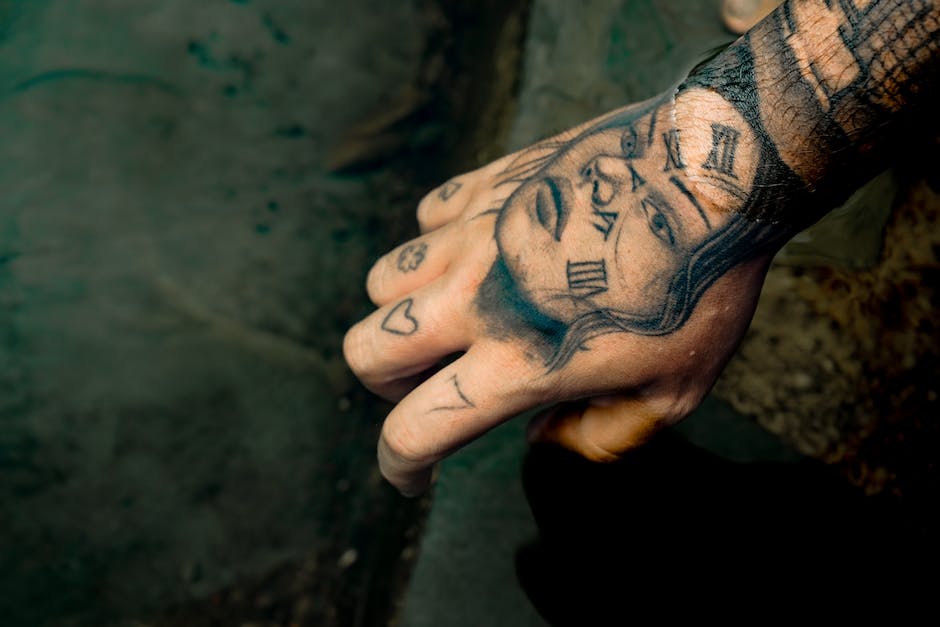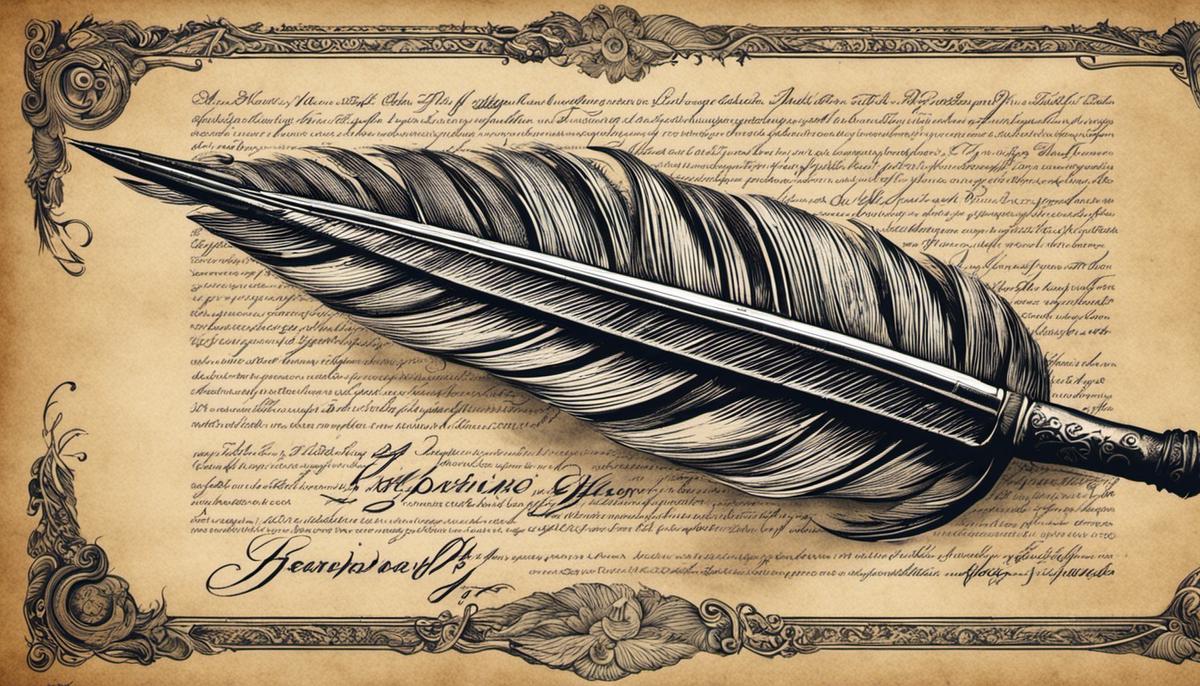In the broad and diverse world of tattoo artistry, the teardrop tattoo holds a place of distinctive significance. Emphasized heavily in cultural traditions, film, music, and even criminal subcultures, this striking symbol is rich in backstory and laden with a range of meanings. From expressing personal grief to marking criminal achievements, the interpretation of this tattoo can vary greatly, often informed by elements such as its design, location, and cultural context. Initial exploration covers the historical inception of teardrop tattoos, delving into their deep roots and evolution over time. With a journey through popular culture and examining the place they hold in today’s society, this exploration aims to uncover the true narrative encapsulated within the teardrop design.
Table of Contents
Origin of Teardrop Tattoos
The Intriguing Origin of Teardrop Tattoos: A Journey Back in Time
Teardrop tattoos boast a fascinating, albeit controversial, history. While these small, unassuming under-eye adornments may be seen as trendy or aesthetically appealing today, they bear an impactful story that’s deeply rooted in cultural significance and social constructs. Take an enlightening stroll down memory lane as we delve into the origins of this powerful symbol.
Primarily, the roots of teardrop tattoos can be traced back to the densely complex world of prison culture. These tattoos first made their appearance in the 1960s amongst inmates and quickly evolved into an intriguing system of coded messages hidden in plain sight. In these tightly wound social circles, displaying emotions can be perceived as a weakness, prompting many to seek alternative, clandestine ways of expressing deep-seated feelings.
The teardrop tattoo found its significance here, initially acting as a potent symbol of grief and loss. It was often inked onto the faces of prisoners who were grieving the loss of a beloved family member or close comrade, signifying their tears shed in silence. Through time, however, these symbols gained additional darker connotations depending on which side of the eye they were located and whether they were filled or unfilled.
In particular, another deeply embedded meaning paints the teardrop tattoo as an emblem of murder. Some theories propose that an unfilled teardrop stands for an attempted murder, while a filled one represents a life taken. Others claim that the number of teardrop tattoos might correspond to the number of people the bearer had killed, acting as an eerie tally, a chillingly stark and silent confession.
As the years passed, these markings gradually transcended the confines of the prison walls. As society’s fascination with gang and jail culture grew, teardrop tattoos started appearing on the faces of celebrities and people outside the incarceration system. With celebrities like Lil Wayne, Amy Winehouse, and The Game sporting teardrop tattoos, their once hard-to-swallow implications were diluted, morphing them into fashionable accessories, a trend that still holds sway today.
However, public perception varies greatly, and it’s crucial to realize that in different communities, these tattoos may still retain their original, heavy significance. For instance, in Australian and New Zealand gang culture, the teardrop marks the wearer as having lost a fellow gang member, holding to the origins of these heart-heavy symbols of grief and loss.
It becomes apparent that these seemingly simple droplets of ink etched onto the skin carry a substantial historical freight. Yet, they have evolved and mutated across diverse cultures and time periods. Undoubtedly, teardrop tattoos offer a captivating peek into the human tendency for silent communication, cultural divergence, and the intriguingly complex ways in which we express our deepest, darkest emotions.
While the conversation about their implications and acceptability continues to evolve, the teardrop tattoo’s intriguing origins remain a testament to the rich tapestry of human culture.

Variations and Meanings of Teardrop Tattoos
As intriguing as the history and evolution of teardrop tattoos are, familiarizing oneself with their different variations can add another level of understanding to the silent stories told through ink. With each position, shape, or additional detail, the meaning of the tattoo can change significantly. It’s worth mentioning that while there are general meanings, interpretations can and do vary based on location and culture.
One intriguing variation with teardrop tattoos is their placement. Traditionally, they are located beneath the eye on the left side. Yet, when you find them on the right side, this can symbolize a personal loss not tied to prison life. This could be the death of a loved one, such as a family member or close friend.
The filled status of the teardrop also plays a significant role in its symbolism. An outlined or empty teardrop often signifies attempted murder or the intent to seek revenge, whereas a filled teardrop represents the successful completion of such a deed. Filled teardrops have also been recognized as markers of time served in prison or for each crime committed.
The number of teardrops can also hold meaning. Multiple tears are symbols of multiple instances of personal loss or several crimes committed. It is to be noted that each additional teardrop enhances the significance and the perceived hardness of the individual.
Tattoos involving teardrop variations can portray deeply personal tales, from the loss of loved ones to reminiscing the atrocities committed. There is also the cross teardrop tattoo, which in some cultures signifies a loss occurred at a young age, while in others, it’s a tribute to a deceased gang member.
It’s important to realize that while these meanings and variations are generally understood, the symbolism of a teardrop tattoo can be highly personal and subjective–the wearer may have their own unique interpretation or reason for getting the tattoo. This underscores the intricacy and depth of the culture surrounding teardrop tattoos. It’s a vibrant, visual language, rich in symbolism and laden with history, that continues to evolve with each drop of ink. Understanding the context and meaning behind these variations provides a rich tapestry of the human experience, beneath skin deep.

Teardrop Tattoos in Popular Culture
Diving further into the rich tapestry of teardrop tattoos, it’s fascinating to explore the significance of their placement. The orientation of a teardrop tattoo on the face, specifically either on the left or right side, carries distinct meanings rooted in the prison culture. Traditionally, a teardrop on the right side signifies loss or mourning while the left side typically indicates that the wearer has committed murder.
Equally intriguing is the symbolism behind the state of the teardrop. A filled teardrop is traditionally perceived as an indication that the wearer has avenged a personal loss or killed someone. Meanwhile, an empty teardrop signifies a loss not yet avenged. These contrasting symbols provide a distinctive view into the life and experiences of the wearer.
There’s another remarkable facet of teardrop tattoos: they can act as a marker of time served in prison or of crimes committed. Every new teardrop added to the tattoo is a symbolic tally of the wearer’s deeply personal journey through life, often steeped in hardships, conflict, and sorrow.
It’s important to note that the number of teardrops can carry unique implications. Although usually related to crimes committed or time served in prison, personal narratives often add complexity to the symbolism. Each teardrop carries a story, humanizing what can be perceived as a daunting image for some.
Created through deeply intimate and subjective experiences, each teardrop variation represents a personal tale or statement. Some wearers selectively use the size, number, and location of the teardrops to develop a personal narrative broadcast to those who are fluent in the language of these tattoos.
Another intriguing version is the cross teardrop tattoo, which carries multiple cultural meanings. One interpretation is religious, signifying repentance and a dedication to a spiritual path. Another sees it as a mark of a lengthy prison sentence. This reiterates the rich, diverse interpretations inherent in this symbol.
And so, it’s becoming clear that the allure of teardrop tattoos lies in its deeply personal and subjective nature. Behind each tattoo lies a unique experience, a tale steeped in the realms of pain, crime, or loss that morphs the traditional iconography into an ever-evolving personal narrative.
While the teardrop tattoo’s prominent history is rooted in prison culture and crime, it has burgeoned into a complex and intricate symbol. Its impactful significance continues to engage communities around the world, further deepening the fascinating culture surrounding teardrop tattoos. Thus, understanding teardrop tattoos goes beyond its initial symbols; it demands a keen understanding of the individualism and varied experiences that shape these poignant markings.

Teardrop Tattoos Today
Teardrop tattoos today are brandished by an array of individuals, reflecting a tapestry of personal experiences, identities and narratives. Not only found in the prison scene, but they are also donned by individuals outside the penitentiary – a testament to their enigmatic appeal and profound symbolism.
The placement of teardrop tattoos is of immense importance and can be found on either the left or right side of the face. Each side narrates a different story, reflecting a unique chapter of the wearer’s life, often linking to their past experiences or affiliations.
Equally significant is the state of the teardrop, whether filled or empty. A filled teardrop traditionally signified the completion of a revenge act, whereas an empty one indicated an unfulfilled quest for vengeance. Today, these symbols carry personal reinterpretations of mourning, remembrance, or survival.
One prominent variant is the cross teardrop tattoo. Not to be mistaken for the common Christian symbol, the cross within a teardrop has traditions rooted in Central American gang culture, signaling membership and commitment to the group.
As tattoos have become more mainstream, so too have teardrop tattoos undergone a renaissance of sorts – found amongst the ink of celebrities, musicians, and even everyday individuals. They’ve migrated on the social ladder and need no longer signify association with the penal system or the perpetration of a crime.
Remember, though: behind each tattoo lies an individual. The number of teardrops, and indeed, their very presence, can narrate an array of personal tales. From marking time served to signifying the loss of a loved one, each tattoo is a unique portrait of life, both its trials, and its triumphs.
People’s motivations for getting a teardrop tattoo can be as unique as the individuals themselves. The symbolism behind these tattoos is not set in stone but is fluid and deeply personal. One person’s badge of honor could be another’s mark of remembrance. The personal nature of tattoos is what makes each piece a one-of-a-kind art.
In conclusion, teardrop tattoos carry a rich history and bear an array of meanings across the cultures. As they continue to be adorned, understand that their interpretation, like their wearers, evolves and bears a deeply personal and loaded significance. Tattoos may speak in a universal language of ink, but remember, the story each tells is individual, personal, and above all, uniquely human. This complexity makes the world of teardrop tattoos so intricate, fascinating, and worthy of exploration. Understanding the personal and subjective nature of teardrop tattoo symbolism continues to intrigue and amaze, as it proudly stands testament to individualism and lived experiences.

As we’ve traced the course of its development and significance, we find the teardrop tattoo rejects a one-size-fits-all interpretation, revealing instead a multitude of meanings flavored by personal interpretations, cultural identities, and social nuance. From ancient tribal markings to today’s high-profile personalities, its adaptability and abiding relevance in the Tattoo industry serves as a testament to its potent symbolism. Whether viewed as body art, personal expression, or societal statement, the teardrop tattoo continues to intrigue and challenge our understanding. This only reaffirms the inherent complexity and ingrained allure of this endearing tattoo symbol, the teardrop, a true window into the soul of its bearer and the society they inhabit.

Zara Desertrose is an acclaimed fashion and lifestyle journalist with a Master’s in Fashion and Luxury Marketing. Known for her keen eye for style and cultural trends, Zara’s writing elegantly weaves together the latest fashion movements with lifestyle aesthetics. Her insightful critiques and trend forecasts make her a leading voice for anyone looking to stay at the vanguard of style.

